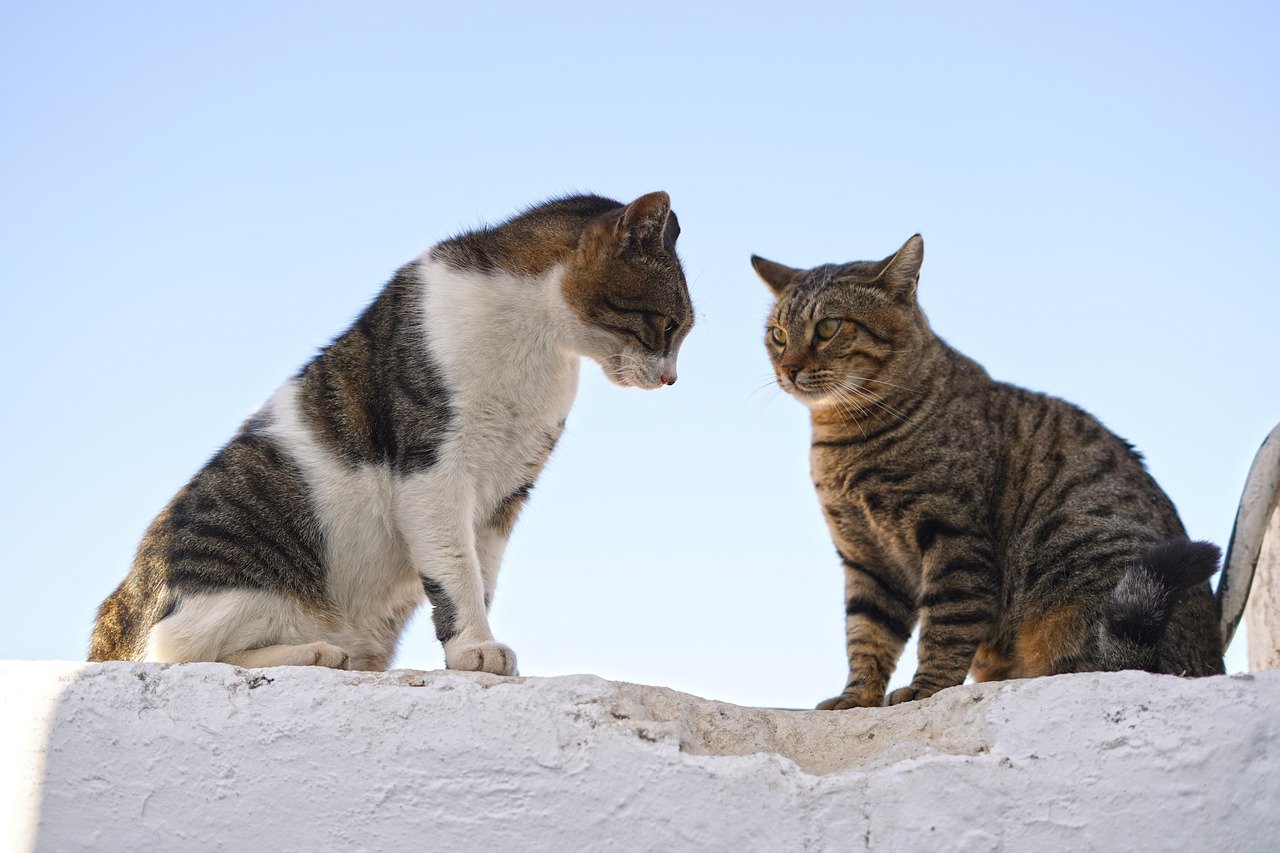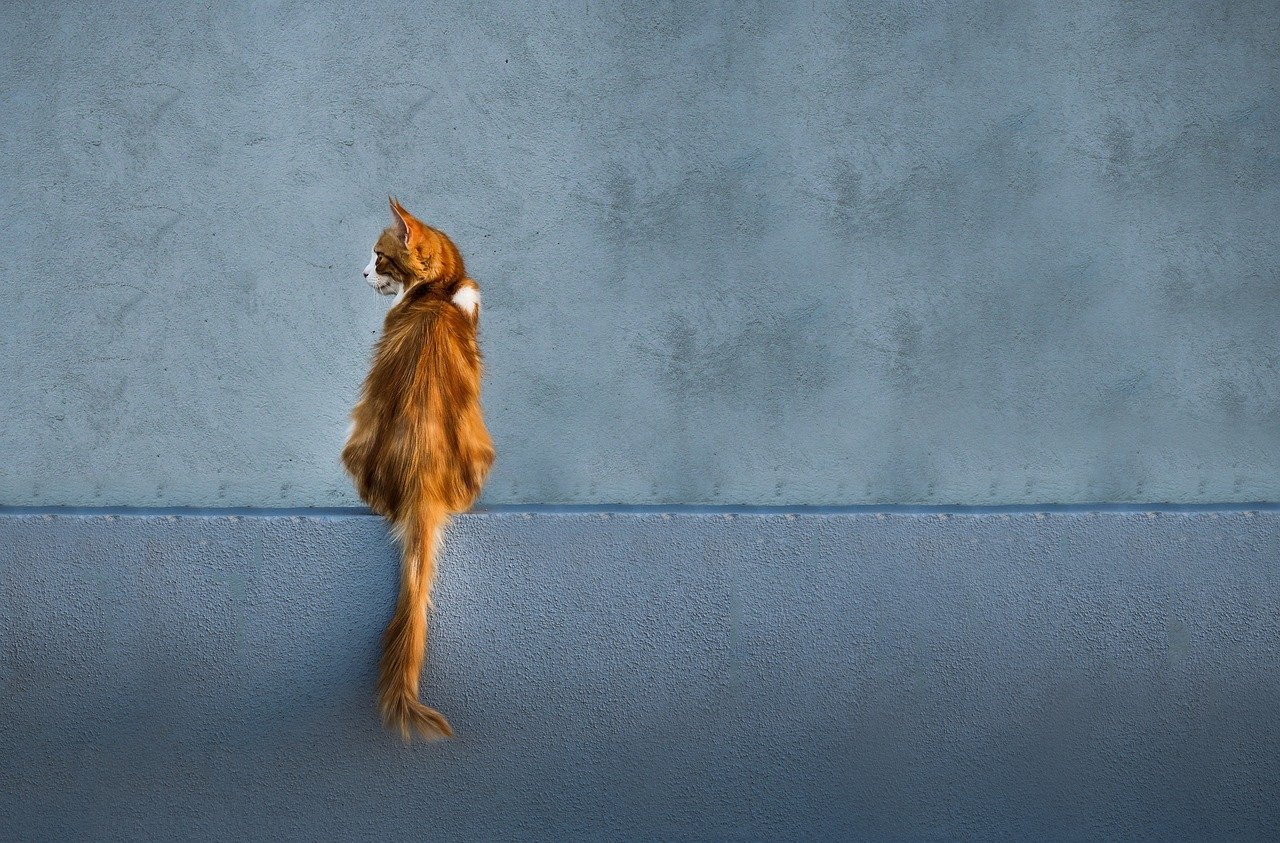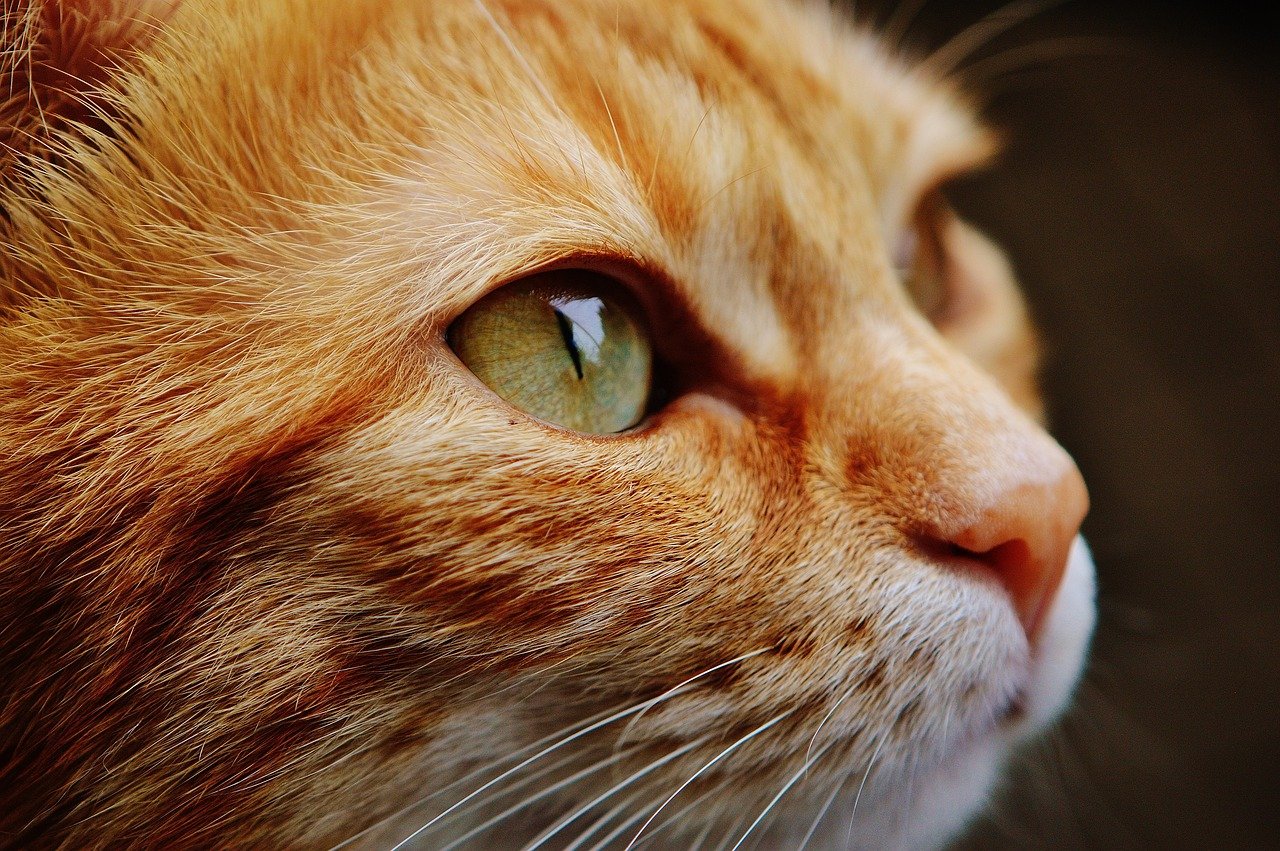Have you ever watched your cats interact and wondered what they were “saying” to each other? Cats, with their mysterious demeanor and elusive nature, have an intricate system of communication that’s often overlooked. Unlike humans, cats rely less on vocal cues and more on body language, facial expressions, and even scents to convey their messages. The unspoken dialogue between cats is a fascinating world waiting to be discovered. Let’s dive into the hidden world of cat-to-cat communication and unravel the secrets of their silent conversations.
The Language of Body Posture

When two cats meet, their body posture speaks volumes. A cat with an arched back and puffed-up fur is clearly trying to look intimidating, signaling a warning to potential threats. On the other hand, a relaxed body with the tail held upright indicates friendliness and a willingness to engage. Cats often use their body language to establish dominance or express submission. For instance, a cat rolling onto its back might seem vulnerable, but it’s actually a sign of trust or an invitation to play. Observing these subtle cues can help us understand the dynamics of feline relationships and provide insights into their social hierarchy.
The Power of the Tail

A cat’s tail is a versatile tool in its communication arsenal. The position and movement of the tail can reveal a cat’s emotional state and intentions. A tail held high is a sign of confidence and openness, often seen when cats greet each other. In contrast, a tail tucked between the legs indicates fear or submission. Rapid tail flicking can signify irritation or agitation, while a slow, gentle swish may indicate curiosity. By paying attention to these tail signals, we can gain a deeper understanding of how cats express themselves and interact with one another.
The Subtlety of Eye Contact
Cats are masters of non-verbal communication, and their eyes are a key component. Direct eye contact between cats can be perceived as a challenge or a threat. However, slow blinking, often referred to as a “cat kiss,” is a sign of trust and affection. When a cat slowly blinks at another, it’s a way of saying, “I mean no harm.” This gentle gesture can help strengthen bonds and foster a sense of security. Understanding the nuances of feline eye contact can enhance our ability to interpret their interactions and create a harmonious environment for our feline friends.
Vocalizations: More Than Just Meows
While cats are known for their iconic meows, they have a wide range of vocalizations that convey different messages. A purr can indicate contentment, but it might also be a sign of self-soothing during distress. Hissing and growling are unmistakable signs of aggression or fear, warning others to keep their distance. Chirping and trilling are often used to greet other cats or express excitement. Each sound carries a specific meaning, helping cats communicate effectively in various situations. By tuning into these vocal cues, we can better understand the emotions and desires of our feline companions.
Scent Marking: The Invisible Dialogue

Cats have a highly developed sense of smell, and they use scent marking as a means of communication. By rubbing their faces or bodies against objects, cats leave behind pheromones that convey information about their identity and territory. This invisible dialogue helps cats establish boundaries and recognize familiar individuals. Scent marking also plays a role in mating behaviors and social bonding. For instance, when two cats share a space, they may engage in mutual grooming to exchange scents and strengthen their bond. Understanding the significance of scent in cat communication can enhance our appreciation for their complex social structures.
The Role of Whiskers
Whiskers are more than just a charming facial feature; they are vital sensory tools for cats. These specialized hairs are highly sensitive to touch and movement, allowing cats to detect changes in their environment. When interacting with other cats, whiskers can help gauge distances and assess the intentions of their peers. For instance, forward-facing whiskers indicate curiosity or interest, while whiskers pulled back against the face suggest caution or defensiveness. By observing the position of a cat’s whiskers, we can gain valuable insights into their emotional state and social interactions.
Play Behavior: A Social Bonding Tool
Play is an essential aspect of cat-to-cat communication, serving as a means of social bonding and learning. Through playful interactions, cats practice important skills such as hunting, chasing, and pouncing. Play behavior also helps establish social hierarchies and strengthen relationships. Cats often engage in mock battles, taking turns being the “aggressor” and the “victim.” This play-fighting allows them to test boundaries and develop trust. By encouraging play between cats, we can promote healthy social dynamics and provide mental stimulation for our feline companions.
Grooming as a Social Activity
Grooming is more than just a hygienic routine for cats; it’s a social activity that fosters bonding and cooperation. Cats often groom each other as a way to strengthen their relationships and build trust. This mutual grooming, known as allogrooming, involves licking and nibbling each other’s fur. It’s a sign of affection and acceptance, helping to reinforce social bonds. In multi-cat households, grooming can also help reduce tension and promote a sense of unity. By observing grooming behaviors, we can gain insights into the social dynamics and emotional well-being of our cats.
Understanding Conflict and Resolution
Conflict is a natural part of feline social interactions, but cats have developed strategies to resolve disputes peacefully. When tensions arise, cats may use body language and vocalizations to communicate their intentions and de-escalate conflicts. For instance, a cat may hiss or growl to assert dominance, while another may crouch or retreat to signal submission. Understanding these signals can help us mediate conflicts and create a harmonious environment for our cats. By promoting positive interactions and providing ample resources, we can minimize tension and ensure the well-being of our feline companions.
Understanding the hidden world of cat-to-cat communication allows us to appreciate the complexity and richness of feline relationships. By observing their body language, vocalizations, and scent marking, we can gain valuable insights into their social dynamics and emotional states. Whether through playful interactions, grooming, or conflict resolution, cats have developed sophisticated ways to communicate and coexist. By fostering a deeper understanding of these silent conversations, we can enhance our bond with our feline friends and create a harmonious environment where they can thrive.

Suhail Ahmed is a passionate digital professional and nature enthusiast with over 8 years of experience in content strategy, SEO, web development, and digital operations. Alongside his freelance journey, Suhail actively contributes to nature and wildlife platforms like Feline Fam, where he channels his curiosity for the Feline into engaging, educational storytelling.
With a strong background in managing digital ecosystems — from ecommerce stores and WordPress websites to social media and automation — Suhail merges technical precision with creative insight. His content reflects a rare balance: SEO-friendly yet deeply human, data-informed yet emotionally resonant.
Driven by a love for discovery and storytelling, Suhail believes in using digital platforms to amplify causes that matter — especially those protecting Earth’s biodiversity and inspiring sustainable living. Whether he’s managing online projects or crafting wildlife content, his goal remains the same: to inform, inspire, and leave a positive digital footprint.






